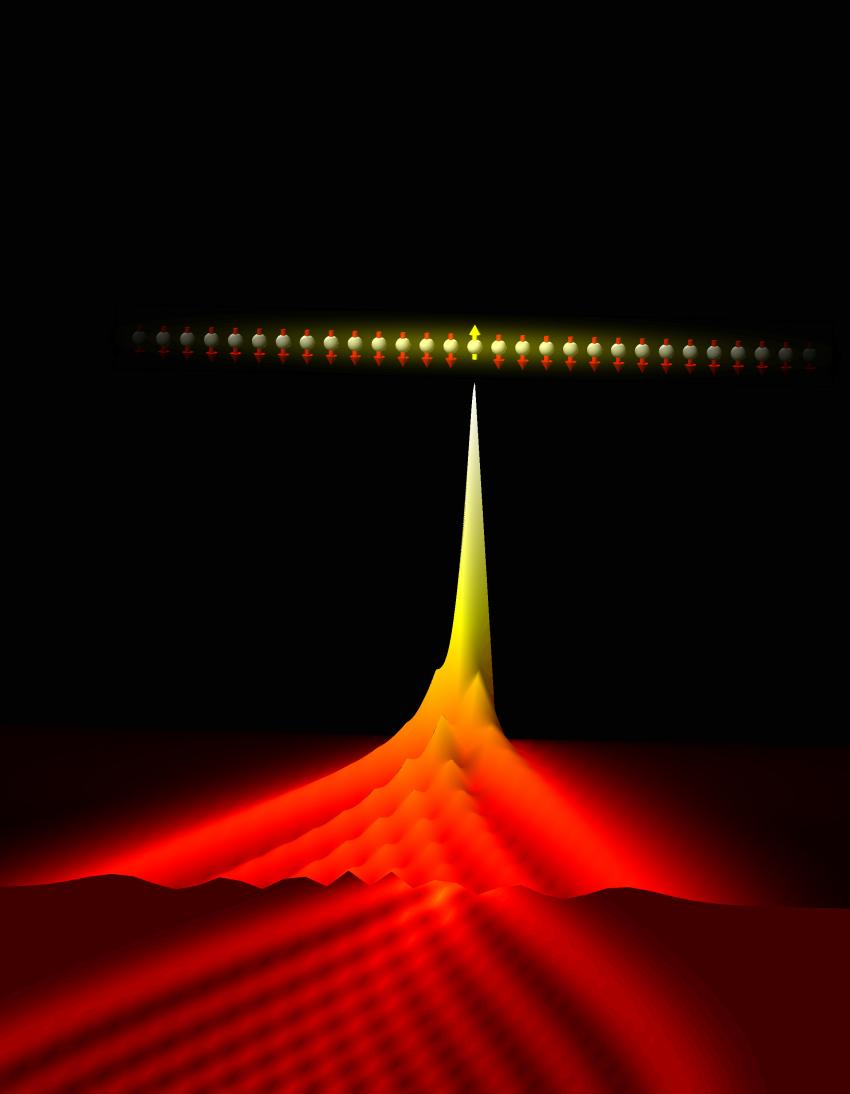Researchers Brian Vohnsen and Denise Valente at the University College in Dublin, Ireland have discovered a unique way to measure incredibly small distortions in light waves. Their technique involves indirectly studying the behavior of what they call quasiparticles. These are defined as ripples in the electric field that emerge when light and solid surfaces interact. The researchers’ technique could fine application in metrology and chemical sensing, as well as potential improvements in adaptive optics for microscopy and biomedicine.

This sensor technology is based on a quasiparticle that emerges when light waves couple with the electrons’ oscillations of certain solid surfaces. By measuring how efficiently incoming light creates these quasiparticles, the researchers are able to derive previously undetectable distortions in the wavefronts.
Quasiparticles Reveal the Shape of Light
Currently, measurement of the shape of a wavefront of light is done with devices known as wavefront sensors. They work in one of two ways. The first is by studying the interference patterns of light, but that approach requires the extra step of ensuring that the interacting light waves are in phase – meaning their waveforms overlap precisely. The other method is to mechanically sample the wavefronts: for example, with an array of micro lenses.
Though extremely efficient for applications like adaptive optics, which enable telescopes to reduce the apparent blurring of the Earth’s atmosphere, these systems are relatively bulky and are blind to distortions on very fine scales. To reach new levels of precision, the researchers considered using the well-studied resonance behavior of quasiparticles known as surface plasmon polaritons (SPPs), which respond to even extremely small-scale wavefront distortions. SPPs arise when light meets an electrically conducting surface at a specific angle. At the point where they interact, electrons oscillate, forming a wave-like pulse that travels across the surface. Just as light can be described in some cases as a particle and a wave, so too can these SPPs, which is why scientists refer to them as quasiparticles.
Measuring Minute Changes
The researchers first direct the wavefront to be measured onto a gold film sensor. The strength with which SPPs are formed depends on the angle the light meets the sensor. Any changes in that angle, as would occur from a distortion in the wavefront, would affect the way the SPPs are formed. This then directly effects how much light is reflected back from the surface.
It is this change in reflected intensity that the researchers measure. And this change is easily captured with cameras that are sensitive to very minute changes in intensity.
To fully reconstruct the wavefront, the system requires two separate measurements made at 90 degrees to one another. It is then possible to use basic mathematical calculations to determine the tiny changes in the actual wavefront based on these two, orthogonal intensity data points. The speed of the measurement is therefore only limited by the speed of the cameras.
This method is a significant improvement over using interference patterns for wavefront sensing because the wavefront changes are captured directly, producing the potential to greatly increase the speed with which measurements can be made. It also samples the wavefront continuously across the entire beam, creating a higher resolution result than can be achieved with a micro lens array.
The paper "Surface-plasmon-based wavefront sensing" is available at https://www.osapublishing.org/optica/abstract.cfm?uri=optica-2-12-1024
For more information, visit:
https://www.osapublishing.org/optica/home.cfm
https://www.researchgate.net/profile/Brian_Vohnsen
https://www.researchgate.net/profile/Denise_Dos_Santos2